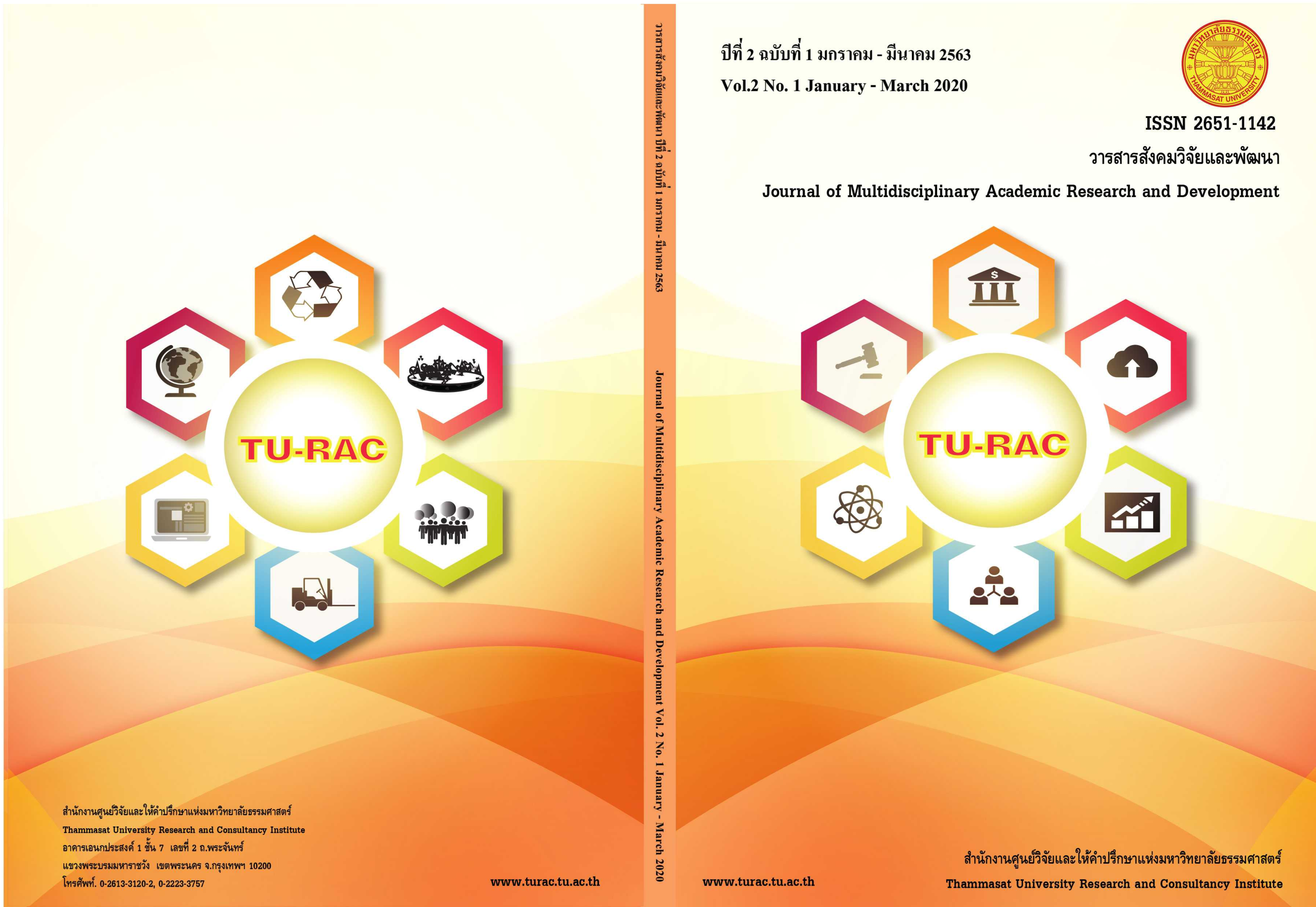The Fairs Management by Community to Support the Economy Reliant : Samroi-Glar Case Study, Banpadwoge Community, Hintok, Ronpiboon, Nakorn Si Thammarat Province, Thailand
Keywords:
Samroi-Glar Fairs, The Fairs management, Community support, Economy Reliant, Nakorn Si Thammarat, ThailandAbstract
The purpose of this research was to study the development of Samroi-Glar Fair which was a community fair at Banpadwoge, Hintok, Ronpiboon, Nakorn Si Thammarat Province, Thailand. The study was focused on their management system to enhance the self-sufficiency community of Samroi-Glar Fairs. For qualitative research, the target groups were selected from 37 persons involved in the management of Samroi-Glar Fairs and people supporting the self-sufficiency community. The data were collected by oral interviews and recorded in written form by researchers. The data were analyzed by using descriptive analysis.
The findings were as follows:
- Development of the market management of Samroi-Glar Fairs was initiated by the private sector and, later, by the joint management of the private and local sectors.
- Management in the community of Samroi-Glar Fairs; Market space allocation, organize the market and working with the local sectors, thus creating a community Fairs
at the standard level, such as organizing zones to distribute products, organizing the store stall, area improvements by laying concrete floors. etc. - Enhancing the self-sufficiency community of Samroi-Glar Fairs;
3.1 The group of product distributors is locally manufactured in order to reduce the sales capital without going through middlemen, resulting in the products being inexpensive and increasing productivity to meet the needs of consumers.
3.2 Customers like to consume local products to help strengthen the community economy. The Fairs had also encouraged the community setting up the marketing group.
References
กรมส่งเสริมการปกครองท้องถิ่น กระทรวงมหาดไทย. (2546). แนวทางการดำเนินการปรับปรุงตลาดหรือมาตรฐานตลาด (ตลาดนัด). สืบค้นเมื่อวันที่ 11 ตุลาคม 2559, จาก www.dla.go.th.
จิรดา นาคฤทธิ์ และอนุพร ทองใหม่. (2559). หลักการตลาด. สืบค้นเมื่อวันที่ 16 กันยายน 2559, จาก www.bbc.ac.th.
ฐิติวรดา รุ่งเรือง. (2563). เศรษฐกิจชุมชนพึ่งตนเอง บนพื้นฐานชุมชนาธิปไตย. สืบค้นเมื่อวันที่ 28 กุมภาพันธ์ 2563, จาก https://sites.google.com/site/thitiwrdarungreuxng/.
ดวงทิพย์ จันทร์อ่วม. (2559). แนวทางการพัฒนาการตลาดอย่างยั่งยืน : กรณีศึกษาตลาดโบราณบางพลี อำเภอบางพลี จังหวัดสมุทรปราการ. วารสารร่มพฤกษ์ มหาวิทยาลัยเกริก. 34(2): 52-72.
ทัศนา หงส์มา. (2555). ปัจจัยที่ส่งผลต่อพฤติกรรมการตัดสินใจเลือกสินค้าของผู้ซื้อในตลาดนัด: กรณีศึกษาตลาดนัดในกระทรวงสาธารณสุข จังหวัดนนทบุรี. สืบค้นเมื่อวันที่ 9 มิถุนายน 2559, จาก www.rup.ac.th
ประภาพร พนมไพร. (2558). การตลาดเชิงสร้างสรรค์ภายใต้แนวคิดเศรษฐกิจพอเพียงของเครือข่ายกลุ่มอาชีพผู้ผลิต และแปรรูปกล้วย ในจังหวัดเชียงราย. วารสารมงคลล้านนา. 3 (1): 56-73.
โสภณ สุภาพงษ์. (2541). เศรษฐกิจพอเพียงทางรอดทางสังคมไทย. นิตยสารสารคดีครอบครัว. (กันยายน 2541) : 71-79.



